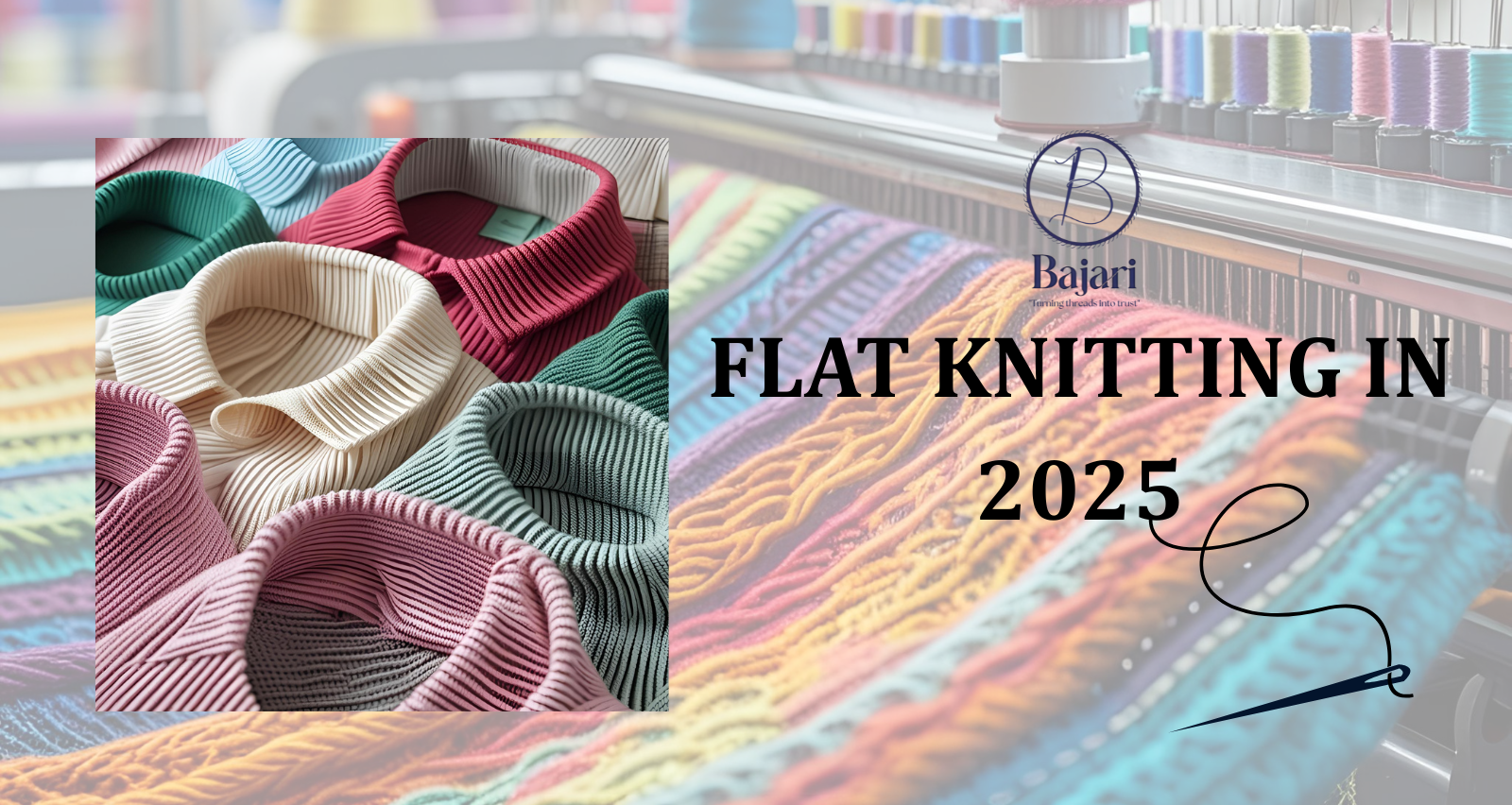Flat knitting has become one of the most versatile and innovative knitting methods in the textile industry. In 2025, it continues to evolve with digital automation, sustainable practices, and advanced materials. From fashion and sportswear to technical textiles, flat knitting offers unmatched flexibility in producing fully fashioned garments, collars, cuffs, panels, and even seamless items.
1. What is Flat Knitting?
Flat knitting is a fabric manufacturing method that creates knit fabrics row-by-row in a flat (horizontal) format using flatbed knitting machines. Unlike circular knitting, flat knitting can produce both shaped and non-tubular structures, allowing for precise control over design and garment construction.
Key Features:
- Knits fabric in panels, not tubes
- Enables variable stitch types and patterns in a single piece
- Ideal for 3D shaping and fully-fashioned garments
- Suitable for small batches and customized production
2. Applications of Flat Knitting
Flat knitting is widely used across multiple sectors due to its accuracy, customization options, and ability to reduce post-production steps.
Main Applications:
- 👕 Apparel & Fashion
- Sweaters, cardigans, pullovers
- Polo shirt collars, cuffs, and waistbands
- Seamless or fully-fashioned knitwear
- ⚽ Sportswear & Activewear
- Compression garments and panels
- Stretch zones for enhanced mobility
- Breathable mesh structures
- 🧵 Accessories & Components
- Scarves, gloves, socks
- Structured trims and ribbing
- Knit shoe uppers
- 🛏️ Home & Technical Textiles
- Cushion covers, mattress panels
- 3D spacer fabrics and padding
- Industrial filter fabrics and wearables
3. Flat Knitting Trends in 2025
A. Whole-Garment & Seamless Production
- New-generation flat knitting machines can produce entire garments with no sewing or linking, reducing labor and waste.
- Popular in activewear, loungewear, and medical compression wear.
B. Sustainable Yarn Integration
- Use of recycled fibers, organic cotton, and bio-based yarns is rising.
- Mono-material flat knits are easier to recycle, supporting circular fashion goals.
C. Customization & On-Demand Manufacturing
- Digital programming allows for custom-fit garments, logos, and color variations.
- Short runs and small batch production align with modern e-commerce and D2C models.
D. Smart Machine Technology
- AI, CAD, and IoT integration enable real-time monitoring, defect prevention, and faster design-to-production turnaround.
- Machines can now auto-adjust tension, stitch length, and yarn feed for higher precision.
4. Advantages of Flat Knitting
Conclusion
Flat knitting in 2025 is more than just a method—it’s a solution for modern textile production. Whether you’re serving fashion brands, producing sportswear, or exploring technical fabrics, flat knitting offers unmatched efficiency, design flexibility, and sustainability.
As automation and sustainability reshape the industry, investing in digital flat knitting machines and eco-friendly yarns is essential for staying competitive.


